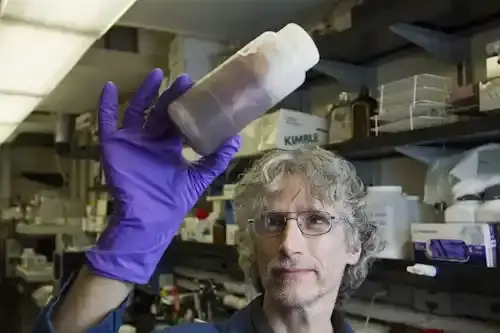How dymetabolic dysfunction is related to disease and aging
Ideally, aging should be a time to relax and enjoy the fruits of your labor. However, aging has a dark side, often associated with disease. Every second, your cells carry out billions of biochemical reactions that fuel the basic functions of life, forming a highly interconnected metabolic network. This network enables cells to grow, multiply and repair themselves, and disrupting them can drive the aging process. But does aging cause metabolic decline, or does the metabolic disorder accelerate aging? Or both? To address this hen-egg question, you first need to understand how metabolic processes break down during aging and disease.
The relationship between metabolism and aging

Recommend
Aging is the most important risk factor for many of the most common diseases in society, including diabetes, cancer, cardiovascular disease and neurodegenerative disorders. The main factor behind the emergence of these health problems is the disruption of cellular and metabolic balance or homeostasis. Disrupting balance destabilizes the body's internal environment, leading to an imbalance that can lead to a series of health problems, including metabolic disorders, chronic diseases, impaired cellular functions that contribute to aging and other serious conditions. Disturbed metabolism is associated with many hallmarks of aging cells, such as telomere shortening, damage to chromosomal protective ends, genetic instability, and a tendency to form genetic mutations. Metabolism can be divided into two broad processes: anabolism, molecular construction, catabolism, or molecular breakdown. Abnormal metabolism is also associated with mitochondrial impairment; cellular aging, or when cells stop dividing; imbalance in the gut microbiome; and reduced cell ability to detect and respond to various nutrients. Neurological disorders, such as Alzheimer's disease, are prime examples of age-related conditions with a strong link between unregulated metabolism and functional decline. For example, my research team previously discovered that in older mice, the ability of bone marrow cells to produce, store, and use energy is suppressed due to increased activity of the protein that regulates inflammation. This lack of energy leads to increased inflammation, which worsens due to the dependence of these aging cells on glucose as their main fuel source. However, experimental inhibition of this protein in bone marrow cells in aging mice activates the cells' ability to produce energy, reduces inflammation and improves the flexibility of the brain region involved in memory. This discovery suggests that some cognitive aging can be reversed by reprogramming glucose metabolism in bone marrow cells to restore immune function.
Reuse of medications to treat Alzheimer's disease

In our newly published research, my team and I discovered a new association between glucose metabolism dysfunction and neurodegenerative diseases. This led us to identify a drug originally designed to treat cancer that could be used to treat Alzheimer's disease. We focused on an enzyme called IDO1 that plays a crucial role in the first step of breaking down the amino acid tryptophan. This pathway produces a key compound called quinorinin, which fuels additional energy pathways and inflammatory responses. However, excess quinorinin can have adverse effects, including an increased risk of Alzheimer's disease.IDO1 is a key player in the metabolism of brain cells. We found that inhibition of IDO1 can restore memory and brain function in a range of preclinical models, including in cell cultures and mice. The brain is one of the most glucose-dependent tissues in the body. The inability to properly use glucose to fuel critical brain processes can lead to a deterioration of trophic and cognitive metabolism. High levels of IDO1 reduce glucose metabolism by producing excess quinorinin. So IDO1 inhibitors – originally designed to treat cancers such as melanoma, leukemia and breast cancer – can be reused to reduce quinorinin and improve brain function. Using a range of laboratory models, including mice and cells from Alzheimer's patients, we also found that IDO1 inhibitors can restore glucose metabolism in brain cells. Furthermore, we were able to restore glucose metabolism in mice with amyloid accumulation and tau – abnormal proteins involved in many neurodegenerative disorders – by blocking IDO1. We believe that the reuse of these inhibitors can be beneficial in various neurodegenerative disorders.
Promote healthier cognitive aging

The effects of neurological disorders and metabolic decline weigh on individuals, families and the economy. While many scientists have focused on targeting the after-effects of these diseases, such as managing symptoms and slowing progression, treating these diseases early can improve cognition with aging. Our results suggest that dietary metabolism targeting has the potential to not only slow neurological decline but also reverse the progression of neurodegenerative diseases such as Alzheimer's, Parkinson's and dementia. Discovering new insights at the intersection of intensity, metabolism, and aging can pave the way for healthier aging. Further research could improve our understanding of how metabolism affects lifetime stress and cellular balance responses.








